
Picture This


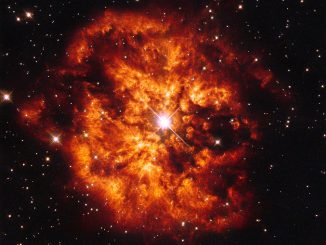
Hubble’s fireball
In this NASA/ESA Hubble Space Telescope image we see the central Wolf-Rayet star known as Hen 2-427 — more commonly known as WR 124 — surrounded by the nebula M1-67. Both objects are found in the constellation of Sagitta some 15,000 light-years away. The hot clumps of gas ejected by the star into space are travelling at over 150,000 kilometres per hour.
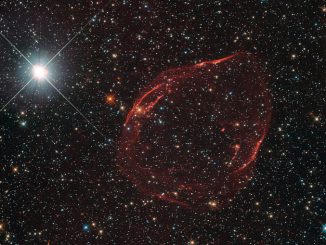
Hubble views supernova shrapnel
Several thousand years ago, a star some 160,000 light-years away from us exploded, scattering stellar shrapnel across the sky. The aftermath of this Type Ia supernova is shown here in this striking image from the NASA/ESA Hubble Space Telescope. The exploding star was a white dwarf located in the Large Magellanic Cloud, a close neighbouring galaxy.
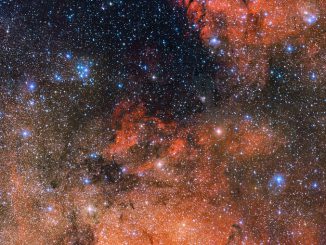
VST captures 615-megapixel image of open cluster Messier 18
Messier 18 is the small smattering of bright blue stars upper left of centre in this small-scale version of the original mammoth 30,577 x 20,108 pixel ESO image captured by the OmegaCAM camera attached to the VLT Survey Telescope (VST), located at the European Southern Observatory’s Paranal Observatory in Chile.
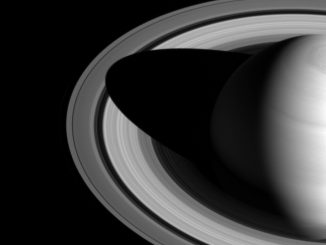
Saturn’s seasonal shadows
The shadow of Saturn’s globe on the rings, which stretched across all of the rings earlier in the Cassini spacecraft’s mission, now barely makes it past the Cassini Division. The changing length of the globe’s shadow marks the passing of the seasons on Saturn. As the planet nears its northern-hemisphere solstice in May 2017, the shadow will get even shorter.

Hubble sees a lopsided lynx
This galaxy, known as NGC 2337, resides 25 million light-years away in the high northern constellation of Lynx. NGC 2337 is an irregular galaxy, meaning that it lacks a distinct, symmetrical appearance. The galaxy was discovered in 1877 by the French astronomer Édouard Stephan who, in the same year, discovered the galactic group Stephan’s Quintet.
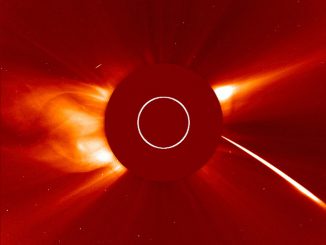
SOHO sees bright sungrazer comet
ESA and NASA’s Solar and Heliospheric Observatory, or SOHO, saw a bright comet plunge toward the Sun on 3-4 August 2016, at nearly 1.3 million miles per hour. The comet, first spotted by SOHO on 1 August, is part of the Kreutz family of comets, a group with related orbits that broke off of a huge comet several centuries ago.


Hubble captures an ancient cosmic cluster
Located some 22,000 light-years away in the southern constellation of Musca (The Fly), this tightly packed collection of stars — known as a globular cluster — goes by the name of NGC 4833. Globular clusters are thought to contain some of the oldest stars in our galaxy. This NASA/ESA Hubble Space Telescope image shows the dazzling stellar group in all its glory.
